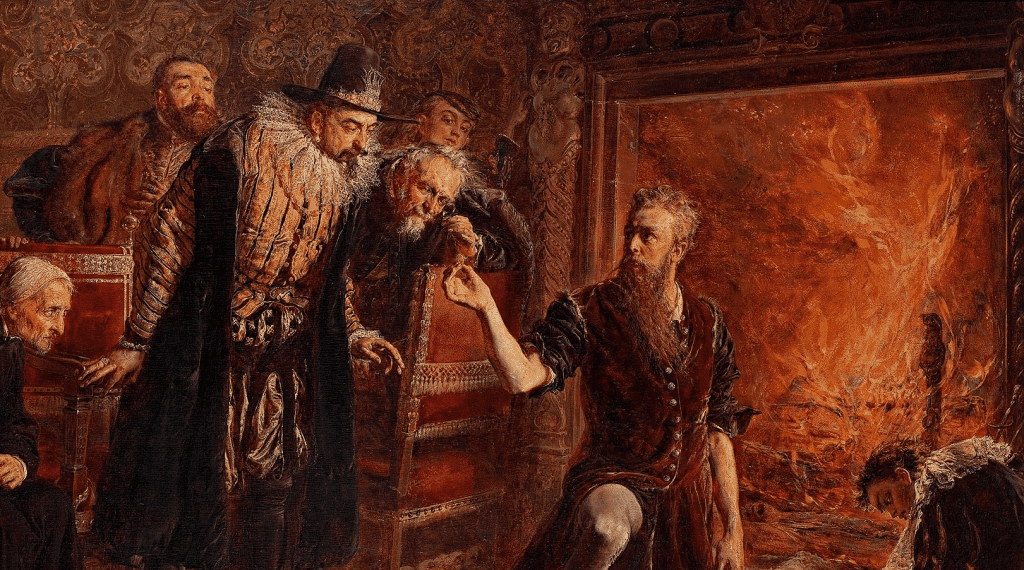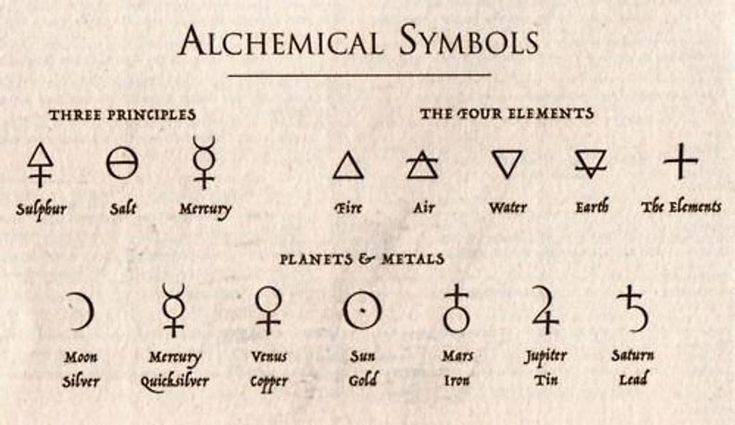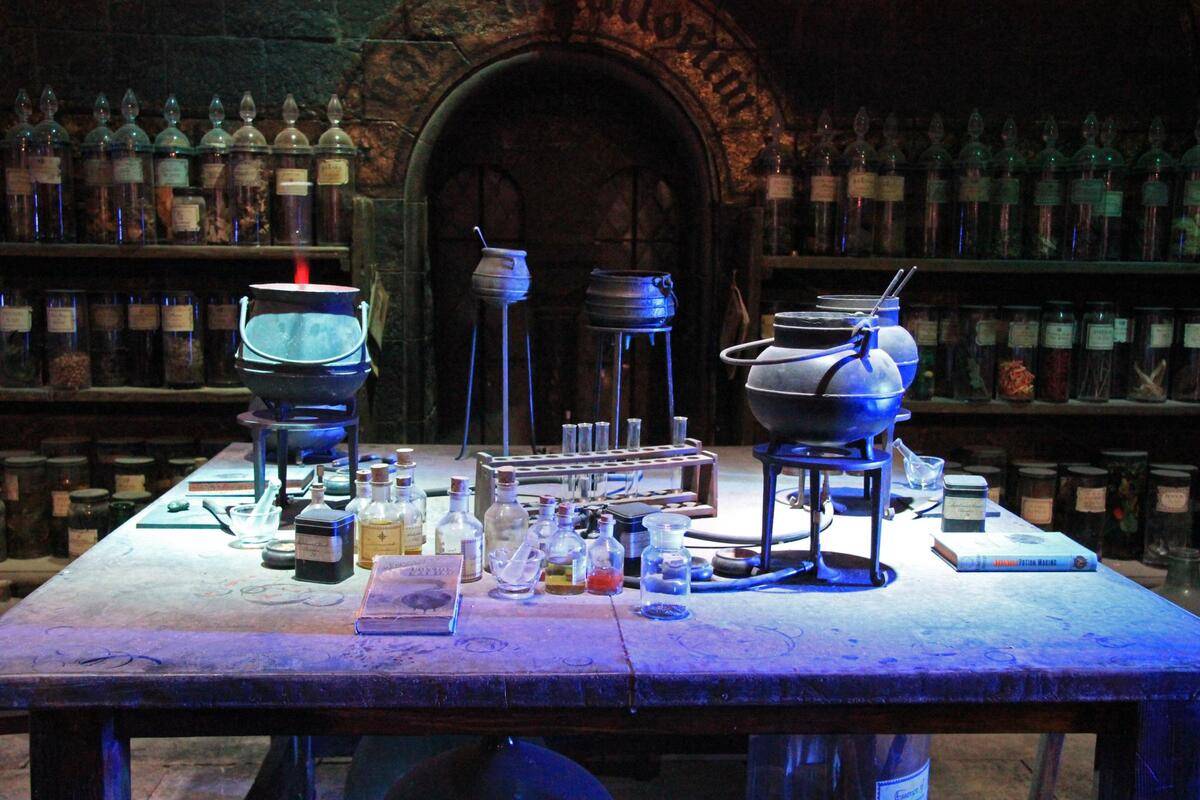Alchemy

Alchemy is an ancient form of natural philosophy that seeks to understand the materials that make up the physical plane and derive methods by which they can be transmuted into other, more noble, forms. In the muggle tradition, alchemy is understood to be a protoscience that was ultimately superseded by the study of chemistry as more of the natural world became observable and quantifiable by the scientific method. However, whereas these alchemical elements were superseded in atomic theory by the modern periodic table and the natural sciences of chemistry and physics, they continue to interact uniquely with mystical energies and one another.
Matter is composed of both mundane and magical elements, and magical alchemy, henceforth referred to as simply ‘alchemy’, is concerned with the study of the latter. Through the interaction and intermixing of particular magical elements with one another, as well as the introduction of magical catalysts and other such outside forces, alchemists are able to transmute matter. This transmutation process not only affects the magical elements of the material in question, thereby producing magical discharge and other such effects, a process that is used in potioneering for example, but also physically and chemically alters the mundane elements of the matter. This latter process allows for the transformation of base metals, such as lead, into noble metals, such as gold.
History
Alchemy emerged as both a magical and muggle science in antiquity, whilst these two branches of study are greatly interlinked, they differed in both practitioner and method. Mundane alchemical studies were rendered ineffective by the lack of access to magical materia and energy. However, the scientific analyses of muggle philosophers and scientists proved transferable to the magical field that shared the same name. For instance, many of the substances identified by muggle alchemists were later proven by wizard alchemists to have magical properties, even when modern muggle sciences expanded upon the scientific understanding of those same substances through atomic theory.
Interestingly, alchemy evolved independently on three separate occasions, in each case originating in an Old World cradle of civilisation. In time, this saw three unique traditions of alchemy evolve: Hellenistic, Chinese, and Indian.
Hellenistic
Western alchemy, including the Islamic traditions of the Middle and Near East, generally traces its origins back to Hellenistic Egypt as ruled by the Ptolemaic dynasty following the rise and subsequent fall of Alexander the Great. From its origins as a syncretisation of Egyptian metallurgy and Greek philosophy, alchemy developed as a unique practice. The earliest known work associated with the birth of alchemy within the Nile Delta is Physica et mystica, a recipe book that detailed not only methodology for the creation of dyes and colours, but also for the transmutation of gold. Such as text was penned by Bolos of Mende, a Hellenised Egyptian who lived around 200 BC.
As with many aspects of both Greek and Egyptian tradition, the study and teachings would be adopted and spread across the breadth of the Roman Empire. Upon the collapse of the Western Roman Empire, the legacy of alchemy would endure in the surviving Greek Eastern Roman Empire, known to contemporary historians as the Byzantine Empire, and the Islamic World. This tapestry of history is reflected in the very name of the practice, being from the Arabic al-kīmiyā, itself from the Ancient Greek khumeía. It is this tradition and science that the bulk of Western alchemical practice is concerned with.
Hellenistic alchemy is concerned with the transmutation of materials, most commonly in the form of metals, into other such materials. Ostensibly, the grand goal of the Hellenistic tradition is the discovery of the magnum opus (lit. the great work), the process by which an alchemist may create the Philosopher’s Stone. This object was capable of not only turning any metal into pure gold, but producing the elixir of life, a substance that rendered the drinker immortal. The creation of such a stone was broadly considered to be an impossible, or near enough to impossible, feat for much of alchemy’s history, up and until such doubts were proven to be unfounded when French alchemist, Nicholas Flamel, succeeded in the creation of the only known Philosopher’s Stone in the 14th century. Through the use of the Elixir of Life, Flamel and his wife, Perenelle, lived up until the latter half of the 20th Century, when the Philosopher’s Stone was destroyed in connection to the lead up to the Second Wizarding War.
Chinese
As with Hellenistic alchemy, Chinese alchemy centred around the discovery of the Elixir of Life. In fact, whereas the Western tradition also put a great deal of emphasis on the transmutation of base metals into more precious, or noble metals, the Chinese school was centred almost entirely around wellness and the purity of mind, soul and spirit. Whilst the creation of precious metals had obvious appeal to Chinese practitioners, as it did with their counterparts in the Mediterranean, oriental alchemical practice put an even greater emphasis on the pursuit of longevity.
The most distinctive feature of Chinese alchemy, however, is the use of inner alchemy, or neidan, in addition to outer alchemy, or waidan. Outer alchemy includes alchemical operations such as the preparation of elixirs through the mixing of reagents such as mercury, arsenic, other such metals, and botanical and animal products. In this way, it is quite similar to the styles of alchemy found within the subcontinent and west of the Indus. It is this form of alchemy that was detailed in the most famous of the ancient Chinese texts, the Tan chin yao chüeh, commonly attributed to Sun Ssu-miao in around the 7th century AD.
Inner alchemy, on the other hand, revolves around the practice of cultivation, or the manipulation of substances already present within the body. Through meditation and repeated exercise, practitioners are able to cultivate the elements and materia located within the major organs, thereby transmuting them into magical energy with the effect of healing ailments and prolonging life. A relatively lesser known methodology outside of the Confucian cultural sphere, neidan is not always considered a school of alchemy by those of the Western and Indian traditions who are prone to a stricter definition of what constitutes the practice.
Indian
Rasāyana is the term for the Indian school of alchemy, it being the Sanskrit word for ‘path’ (ayana) of ‘essence’ (rasa). Indian alchemy, much like the pursuit of the philosopher’s stone in the Hellenistic tradition, or cultivation in the Chinese tradition, is primarily concerned with lengthening lifespans and invigorating the body.
To this end, South Asian alchemists and scholars developed their own magical recipes and alchemical formulae. The bulk of this tradition was based around the creation and provision of tinctures, most commonly utilising herbal and mineral ingredients. However, the most commonplace and typical reagent as per the Indian school of alchemy is, and remains, mercury. Whilst concerns as to the health ramifications of long-term mercury use have seen its decline in recent centuries, it was so ubiquitous in ancient alchemical practice that alchemy itself was alternatively known as Rasaśāstra, or ‘the path/science of mercury.’
The most famous of the Indian alchemists was Nāgārjuna, who was recorded by the Persians to have lived in Ujain, in the 10th century AD. Whilst a muggle, his treatises would form the basis of both mystical and mundane alchemical practices for much of the following centuries.
Laws of Alchemy
First Law
Alchemy cannot violate the law of conservation of matter, materia can only be transmuted into another material with the same mass and magical potential.
Second Law
Materia can only be transmuted into another object with a similar elemental makeup.
Third Law
In the transmutation process, there must be a magical exchange wherein part of the matter is converted into magical energy and part of the magical energy is converted to matter. More materia must be transmuted into energy than vice-versa.
Overview
Read in conjunction the fundamental laws of alchemy provide a system under which transmutation can occur. Materials are imbued with both magical and mundane elemental properties, and these properties dictate those items into which it can be transformed via the alchemical process. Transmutation itself is the process of converting some of the magical energy into matter, thereby changing the fundamental chemical makeup of the object. In the process, physical matter is “lost” by being transformed into magical potential. Whilst this may appear as if the third law fundamentally breaks with the first law, this is not the case. The law of equivalent exchange, as it is occasionally known, requires that the overall potential, being the quantifiable combination of the innate magical quality of the material and the physical properties of the matter itself, remain consistent. It is through this process that alchemists are able to ‘purify’ or ‘improve’ upon materials in the search for the magnum opus. For example, lead can be alchemically changed into gold, but in the process some of the physical matter is transmuted into magical energy. As such, the study of alchemy requires discovering the process and route of transmutation that maintains both the structural integrity of the material and its magical potential.

Elements
As it concerns alchemy, there are five elements: earth, water, air, fire, and aether. Each element, with the exception of aether, represents a corresponding state of matter, being solid, liquid, gas and plasma. Aether, on the other hand, represents the void or, rather, the absence of matter entirely. In the alchemical context, muggle elements, such as lead, copper or silver, are valued and powerful substances but are not referred to as elements. Rather they are known as materia, being the materials to which alchemical processes apply. In this way, the definition of element varies between magical alchemy and muggle chemistry, and it is this former definition that will be followed throughout this text.
As with the states of matter to which they correspond in muggle science, the four elements, again excepting aether, form a chain that relates to one another. Fire and earth, being the least and most tangible of the solid elements, serve as opposite ends to this chain, whereas air and water are the intermediaries that link them.
Such a link is demonstrated in the three heavenly substances, materia that alchemists and philosophers of yore considered to be the building blocks of the mortal world. Whilst this understanding of physics has since been disproven, their associations with certain aspects of the human condition mean that they continue to prove useful to potion making and as foci for ritual magic until this very day. Salt, consisting of earth and water, represents the body, mercury, consisting of water and air, represents the spirit, and sulphur, consisting of air and fire, represents the soul. Notably, the latter of these two substances are often paired together, being the feminine and masculine components of the diarchy that represent not only spirituality through alchemy but also magic more broadly. As such, they are often utilised in potion-making to draw out certain components relating to either the mind or the body. Salt, on the other hand, being formed from the most tangible of the elements, represents the mortal coil and the physical world, and grounds alchemical processes.
Notably absent from such discussion is aether. Aether, as an element, exists primarily in principle and in study, and is not able to be actively harnessed nor observed. That said, there exists a subset of alchemical theorists, primarily based in and around the former Byzantine and Ottoman Empires, who suppose that magic itself is representative of aether, being an otherworldly phenomenon. In this context, it is commonly known as quintessence. Such a topic remains the focus of debate and study.
Materia
Materia are those base components made of the four tangible elements. More complex alloys and objects, in turn, consist of intermingled and unified materia. In all, materia are analogous to elements in non-magical chemistry, whereas alchemical elements have more in common with both the states of matter and the subatomic particles that construct said matter. Alchemical theory predisposes that matter is built upon foundational blocks, and materia form the second set of these blocks.
As it relates to materia, the most famous examples are often the seven planetary metals. Known since antiquity, ancient scholars of Hellenistic and later western traditions associated each with one of the seven ancient planets (not to be confused with the modern astronomical definition of planet. These metals are:
Of course, the ancient metals are not the only widely used materia. As aforementioned, salt and sulphur are important components and are themselves classified as materia. Other such notable examples include cinnabar, a material that can be transmuted into mercury, orpiment, a gold-coloured ore of arsenic commonly used in poisons and in wax, and ethanol (alternatively known as aqua vitae or water of life), a liquid commonly used for its imperishable qualities.
Name Latin Planet Copper Cuprum Venus Gold Aurum Sun Iron Ferrum Mars Lead Plumbum Saturn Quicksilver Hydragyrum Mercury Silver Argentum Moon Tin Stannum Saturn

Potion Making
Potion making, naturally, draws upon alchemical principles in the construction and brewing of draughts, elixirs and solutions. The transmutation of materials into others, as well as the drawing out of their magical potential in order to cause particular magic effect utilise form fundamental foundational pieces of the potion making process. One of the most famous examples of how fundamental alchemical concepts influence and govern the science of potion making is found in Golpalott’s Laws with respect to antidotes. Originally a student of the Hellenistic school, after studying the Chinese tradition of weidan in what is now known as Kyrgyzstan, Golpalott determined that the body itself serves as the alchemical vessel in which the antidote and poison interact and counter one another. His rules are as follows:
- The properties of an antidote will be such to render the poison alchemically inert.
- The antidote for a pure poison will be equal to the sum of the poison.
- The antidote for a blended poison will be equal to more than the sum of the antidotes for each of the separate components.
*Lore by Magdalena Wickham-Deakin, Colette Simmons & Tuesday Jeremiah Irons
This is the "Game Master" account. Please do not owl this account, unless specified. This account is not moderated actively and therefore, you may not receive a response.
Contact a Head of House or the Headmaster if you need anything.